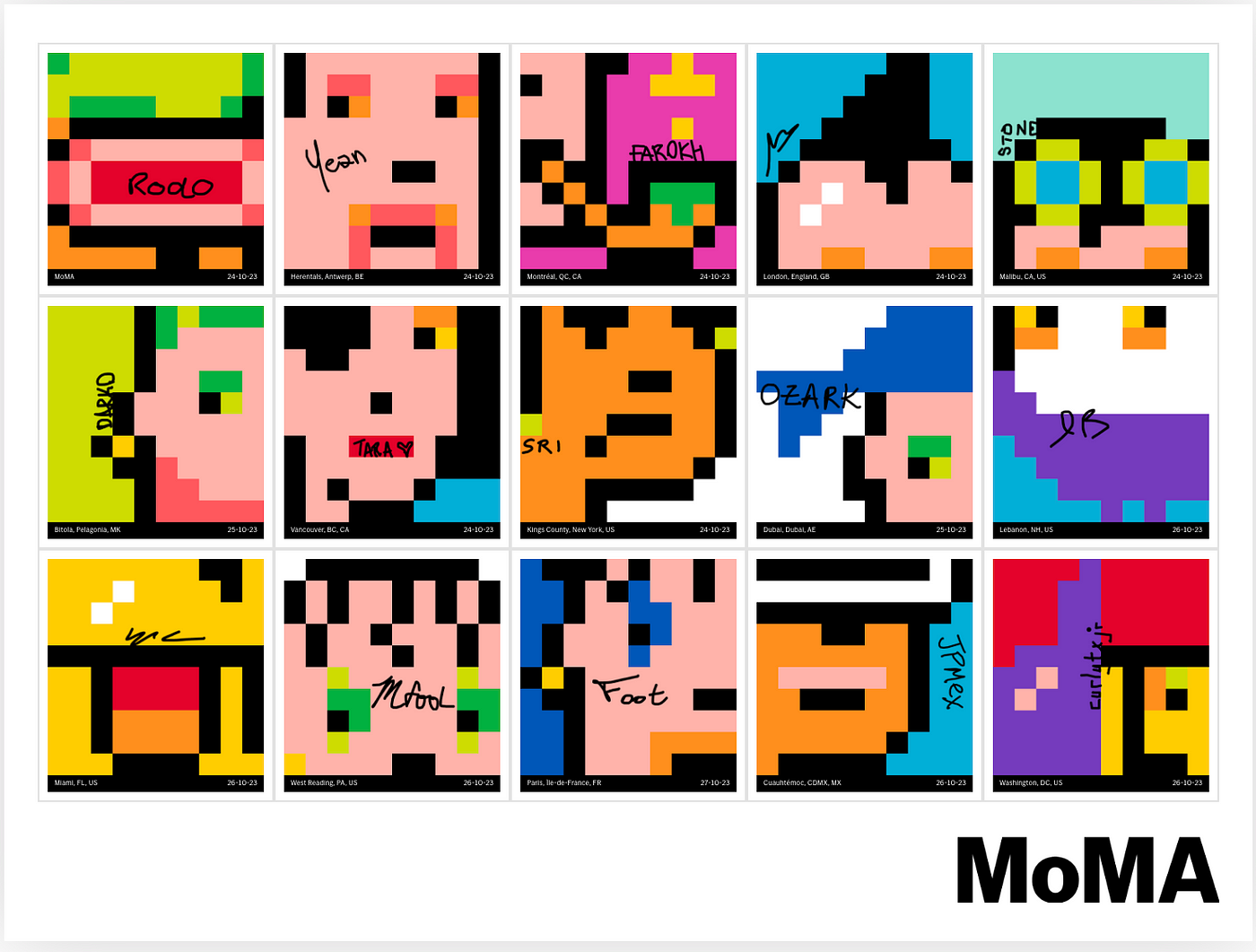In a world where digital and physical realms increasingly intertwine, museums are exploring the frontier of blockchain technology to create novel experiences for their audiences. Projects like MoMA's Postcard initiative, the Van Gogh digital souvenir at Musée d'Orsay, "True Name NFT" by Ian Cheng at LAS Art Foundation, and the immersive exhibition by Gabriel Massan at Serpentine exemplify this innovative blend of art, technology, and community. These initiatives not only redefine audience interaction but also demonstrate blockchain's potential to foster a deeper connection between museums and their visitors.
"True Name NFT": A Personalized Encounter with Ian Cheng's Art at LAS Art Foundation
In a groundbreaking collaboration between artist Ian Cheng and the Light Art Space (LAS) Art Foundation, the "True Name NFT" project stands as a beacon of personalization and engagement in the digital art space. This initiative offers visitors an extraordinary opportunity to interact with art in a deeply personal way. Upon entering the exhibition, visitors are given a wristband that leads to the creation of a unique NFT, minted for free on the Tezos blockchain. The content of this NFT is not random; it is procedurally generated based on the visitor's name and date of birth, intertwining the visitor's identity with the art itself. This project, part of Cheng's immersive experience that combines generative film, ambient music, and interactive displays, pushes the boundaries of visitor engagement, inviting individuals to become part of the artwork in a tangible, lasting manner. The "True Name NFT" serves as a powerful example of how blockchain technology can bridge the gap between the digital and the personal, offering museum-goers a novel way to experience and remember art.
Read our article on live-minting in museum exhibition.
Read our article on live-minting in museum exhibition.

MoMA Postcard: Bridging Art and Technology
The Museum of Modern Art (MoMA) in New York has embarked on a pioneering journey with its MoMA Postcard project. This endeavor invites visitors and global friends to explore collaborative creativity through blockchain technology, marking a significant step in MoMA's web3 development. Inspired by the success of Refik Anadol's "Unsupervised" exhibit, MoMA introduced a playful, interactive project that allows participants to engage with web3 technology in an accessible manner. By scanning a QR code, users can contribute to a digital postcard, adding a personal touch that travels virtually, gathering creative stories and connecting individuals across distances.
Read our article to learn more about this project.
Read our article to learn more about this project.

Digital Souvenir: Capturing Moments at Musée d'Orsay
The Musée d'Orsay's approach to audience engagement through blockchain centers on the creation of digital souvenirs linked to the Van Gogh exhibition. These NFTs, developed in collaboration with the startup Keru, offer a modern take on traditional museum keepsakes. By purchasing these tokens, visitors not only take home a piece of the exhibition but also enjoy tangible benefits, such as discounts and exclusive access to future projects. This initiative showcases the potential of NFTs to enhance the museum experience, making it more interactive, memorable, and rewarding.
Read our article to learn more about this project.
Read our article to learn more about this project.

"Third World: The Bottom Dimension" by Gabriel Massan at Serpentine
Serpentine Galleries' "Arts Technologies" lab presents "Third World: The Bottom Dimension," a groundbreaking project by Gabriel Massan that merges a video game with an art exhibition. This multi-layered experience, powered by Tezos blockchain, invites players to navigate a narrative exploring the impact of colonialism in Brazil. By participating in the game, audiences can mint NFTs capturing their unique experiences, contributing to a digital archive that extends the life of the exhibition beyond its physical boundaries. This project exemplifies how blockchain can be used to engage audiences in meaningful, lasting ways.
Read our article to learn more about this project.
Read our article to learn more about this project.

The Evolution of Museum Ticketing through NFTs
The potential for NFTs to revolutionize museum ticketing is vast, offering new models for enhancing visitor engagement and loyalty. While challenges exist in making these technologies accessible to non-crypto-native audiences, initiatives like the NFL's POAP-like NFT souvenirs demonstrate the possibilities. By building a "social graph" of attendees, museums can foster long-term relationships, offering exclusive events and previews to token holders. This approach not only deepens the connection between museums and their audiences but also opens up innovative avenues for membership and community building.
Read our article on the topic to go further.
Read our article on the topic to go further.

Conclusion: A Canvas for Innovation
These pioneering projects represent just the beginning of blockchain's integration into the museum sector. From interactive digital postcards to NFT souvenirs and immersive game-based exhibitions, blockchain technology is setting the stage for a new era of audience engagement. By offering unique, personalized experiences, museums can connect with their audiences on a deeper level, fostering a sense of community and participation in the cultural dialogue. As more institutions explore these possibilities, the future of museums lies in embracing innovation, where art and technology converge to create unforgettable experiences.
